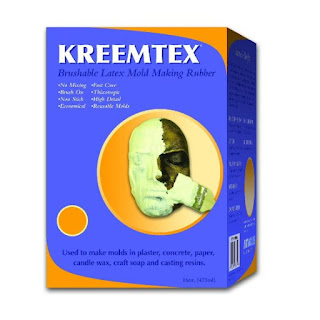Arts like casting and life casting begin with making a mold.
The mold forms the basic underpinning that will dictate the character
and quality of the final casting. Given the wide variety of materials
and techniques that can be used for mold making, both amateur and
experienced mold makers need to not just familiarize themselves with the
options, but also stock the studio with the requisite products.
In
addition to this, making molds will also entail the use of tools,
supplies and equipment that must be kept handy so that the mold making
process can continue without any interruptions or wastage.
Let us take a look at some of the essentials for a mold maker:
- Materials
–Molds can be made with plaster, alginate, latex rubber, silicone
rubber, polyurethane resin, etc. The choice will depend on varied
factors like the master that is to be replicated, technique to be used
for making the mold, material used for casting, etc. Whichever material
is being used, it should be stocked in sufficient quantity to eliminate
the possibility of running short and having to stop the process. In
fact, it is better to have extra material on hand as the mold does not
always turn out perfect on the first attempt!
- Tools –Mold making
involves the use of very many supplies and tools, most of which mold
makers tend to take for granted. But can one afford to be stuck just
because a spatula or gloves are not available when one reaches out for
them? Always stock and replace regular items like mixing bowls and
containers, mold boxes or containment materials, release agents,
spatulas, mixers, cutting and trimming tools and measuring apparatus,
apart from gloves, aprons, safety goggles, etc.
- Equipment –When
working with rubbers and resins, a mold maker cannot overlook the
possibility of air getting trapped in the material and forming bubbles
in the mold. This will call for a vibrating table, pressure pot or
vacuum pump and chamber, depending on the materials being used.
Additionally,
the work area in the studio should be set up properly. The workspace
must be bright and well-ventilated with adequate space to move around
freely. At times, a humidifier may also be needed. There should be
sufficient storage space as some materials need to be stored in
appropriate conditions to maintain their effectiveness and longevity.
Even the supplies and equipment should be kept in drawers or shelves
rather than just being left around on the table or floor.
As a
final note, always opt for top quality mold making materials and tools
from established brands and reputed suppliers. Some of them will even
provide guidance on how to make molds, tips on what is needed and even share tricks for successful mold making!





